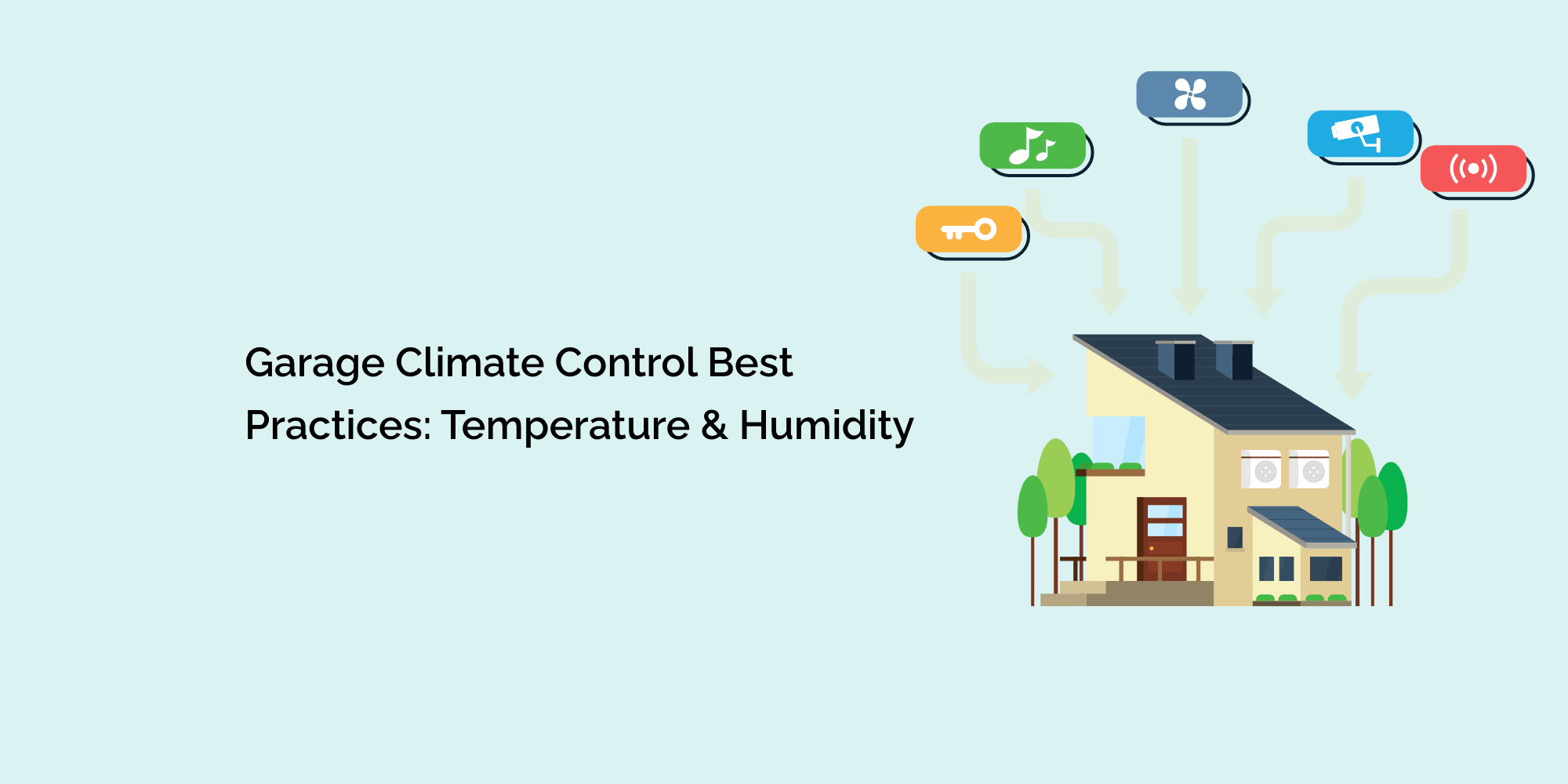Your garage is not just a place to park your car or store your tools; it can also serve as a valuable storage space for various items, from seasonal decorations to cherished valuables. However, garages are often subject to temperature and humidity fluctuations that can potentially damage your belongings.
In this blog, we will explore the best practices for garage climate control, focusing on maintaining optimal temperature and humidity levels. By implementing these practices, you can ensure the longevity and preservation of your valuable possessions.
Understanding the Impact of Temperature and Humidity on Your Garage
Before delving into the best practices, it's crucial to understand how temperature and humidity can affect your garage and its contents. Extreme temperatures can cause items to expand or contract, leading to structural damage or warping.
Additionally, high humidity levels can promote mold growth, corrode metal objects, and damage sensitive materials such as wood or electronics. By comprehending these impacts, you can better appreciate the importance of maintaining an optimal garage climate.
Insulation and Ventilation
Proper insulation and ventilation are fundamental aspects of garage climate control. Insulation helps regulate temperature by reducing heat transfer, while ventilation promotes airflow, preventing the buildup of stagnant air and excess moisture.
Consider insulating your garage doors, walls, and ceilings using materials like foam panels or weatherstripping. Additionally, install vents or exhaust fans to improve air circulation, expel humidity, and maintain a consistent temperature.
Temperature Monitoring and Control
To effectively manage garage temperature, monitoring and control systems are invaluable. Invest in a reliable temperature monitoring device that provides accurate real-time readings. These devices can be connected to your smartphone or computer, allowing you to remotely monitor temperature changes. For temperature control, you can install a space heater or a cooling unit, depending on your climate needs. Remember to choose energy-efficient models that align with your garage size and requirements.
Humidity Monitoring and Regulation
Humidity is another critical factor to consider in your garage climate control efforts. Excess moisture can lead to mold growth, rust, and deterioration of your possessions. Install a humidity monitor to keep track of humidity levels. If the humidity exceeds the recommended range, you may need to employ dehumidifiers or moisture-absorbing products like silica gel or desiccant packs. Proper sealing of windows and doors can also help prevent moisture intrusion.
Proper Storage Techniques
In addition to temperature and humidity control, adopting proper storage techniques is crucial for protecting your belongings. Consider using sealed plastic bins or moisture-resistant containers for items susceptible to moisture damage. For temperature-sensitive items, such as electronics or delicate fabrics, consider investing in a climate-controlled cabinet or storage unit. Elevate items off the floor to prevent water damage in case of leaks or spills.
Regular Maintenance and Inspections
Regular maintenance and inspections play a vital role in ensuring optimal garage climate control. Schedule routine inspections to identify any issues, such as leaks, gaps in insulation, or malfunctioning temperature control devices. Maintain your ventilation system by cleaning filters and removing debris regularly. Address any problems promptly to prevent further damage and maintain a stable climate in your garage.
Energy Efficiency Considerations
While focusing on climate control, it's essential to consider energy efficiency in your garage. Ensure that your insulation and sealing efforts are effective in minimizing energy loss. Look for energy-efficient temperature control devices and appliances that consume less power without compromising performance.
Consider using LED lighting, which is not only energy-efficient but also generates less heat compared to traditional bulbs. By adopting energy-saving practices, you not only reduce your environmental footprint but also save on utility bills.
Weatherproofing and Sealing
To enhance your garage's climate control, pay attention to weatherproofing and sealing. Inspect the garage for any gaps, cracks, or leaks that could allow external air or moisture to enter. Use weatherstripping or caulk to seal these areas, including windows, doors, and any other potential entry points.
Weatherstripping can prevent drafts and keep the temperature more consistent inside the garage. Proper weatherproofing ensures that your climate control efforts are not compromised by external factors.
Seasonal Adjustments
Different seasons bring varying temperature and humidity levels, requiring adjustments in your garage climate control strategies. During hot summer months, ensure adequate ventilation and use cooling methods like fans or air conditioning to maintain a comfortable temperature. In colder seasons, focus on insulation and sealing to prevent heat loss. Adjust humidity control devices based on seasonal humidity changes. By adapting to seasonal variations, you can maintain optimal conditions for your belongings year-round.
Monitoring and Maintenance Tools
In today's technology-driven world, various tools and gadgets can assist you in monitoring and maintaining your garage's climate control. Explore smart home systems that allow remote monitoring of temperature and humidity levels. Some devices even send alerts when conditions exceed the desired range, enabling you to take immediate action. Utilize mobile apps or online platforms that provide insights and historical data to track trends and make informed adjustments. These tools can simplify the process of maintaining an optimal garage climate.
Conclusion
Achieving effective garage climate control requires a combination of insulation, ventilation, temperature and humidity monitoring, proper storage techniques, regular maintenance, and energy efficiency considerations. By implementing these best practices and making adjustments based on seasonal variations, you can create a controlled environment that safeguards your valuable possessions from the damaging effects of temperature and humidity fluctuations.
Remember to regularly inspect and maintain your garage, ensuring that your climate control systems are functioning optimally. With these efforts in place, you can have peace of mind knowing that your belongings are preserved and protected in your garage for years to come.








